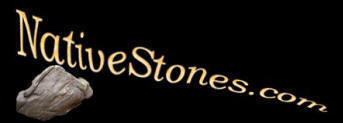|
In 1976,
Barry Fell, a Harvard marine biologist, wrote
America B.C.: Ancient Settlers in the New World, a
wildly popular book which proposed that the New England
stone antiquities were the work of naked Celtic Druids
from Europe
who somehow
-
fought their way into an occupied
continent
-
stayed genetically separate from the local
population
-
built a great deal of stonework and
-
vanished into the ether.
This book is a perennial bestseller, having been
reprinted countless times. It was slapped together in mere
months by an author who knew nothing about Native Americans
and even less about
Celts.
Did European Celts build with stone?
No, except for small amounts of hilltop
fortifications. [See sidebar on right for the few minor
exceptions to this rule.] And if they did not do so on their home
continent, it is unlikely they did so in North America. In
1977, in the wake of the controversy which Fell had engendered, a
conference was held at Castleton State College in Vermont to address this issue. Among those attending was
Anne Ross, perhaps Britain's leading Celtic authority. Dr.
Ross commented on the New England stone antiquities she viewed, and
while noting they were interesting and deserving of further study,
stated they were definitely not Celtic. This did not stop the true
believers of Fell's grand vision. They would not be dissuaded by
evidence at odds with their fantasy. For the curious, a Google
search for "Celtic stonework" [click the button on the left] will
reveal only a few references to "Celtic" designs on much later,
Christian gravestones or to ridiculous efforts to follow Fell's lead in
claiming a vast Celtic presence in America.
There is a great deal of ancient stonework in Europe,
but this long predates the emergence of the Celts. Those who claim
Stonehenge is a Celtic creation are only off by a millennium.
While Fell was wrong about who built what
on this continent, he had a lot of preceding company.
Fell also spawned a small band of followers who would go on
to author their own contributions to the Myth. For
much of the 18th
and 19th Centuries, considerable speculation
existed over who built the massive collection of earthen
mounds (and some stonework) found in the middle of the
continent. Speculation ranged from
Egyptians to Phoenicians to lost tribes of
Israelites. Countless books and articles appeared putting forth
these concepts, especially the notion that Indians
were descended from Jews. Indeed, this was the
dominant belief for the better part of two centuries.
As early as the latter part of the 18th
Century, a distinct deficit had arisen in in the common
knowledge of Native American traditions.
Only a few non-Natives, who through special circumstances
had a familiarity with Native customs, were still able to
make the connections. One of those who did have this
understanding was George Washington.
Thomas Jefferson also contributed thoughtful reasoning to this
debate:
More
Did Old World
peoples create the antiquities of North America?
More
|
